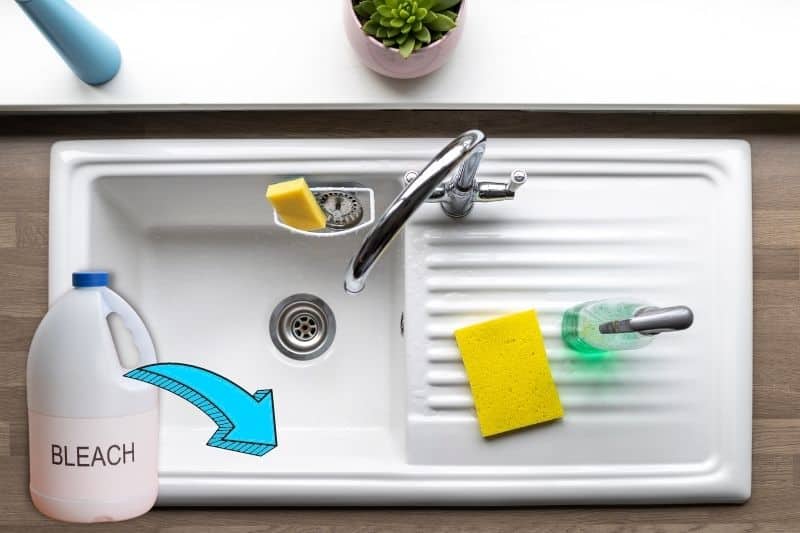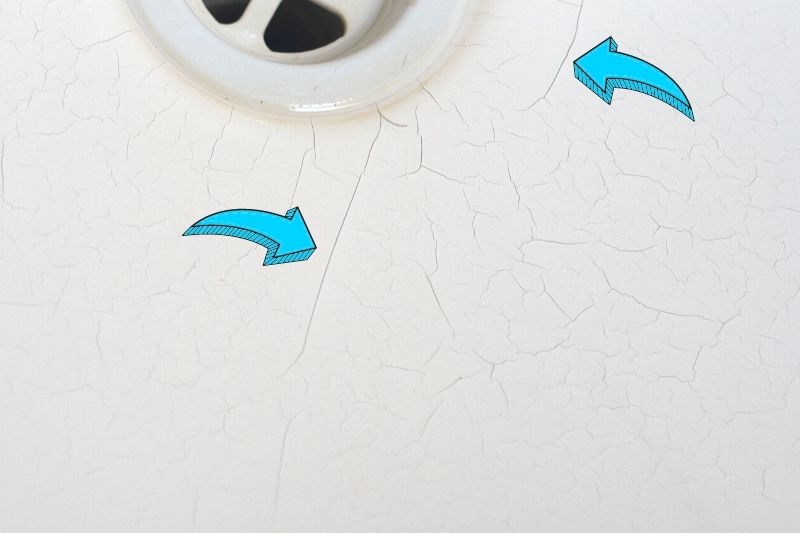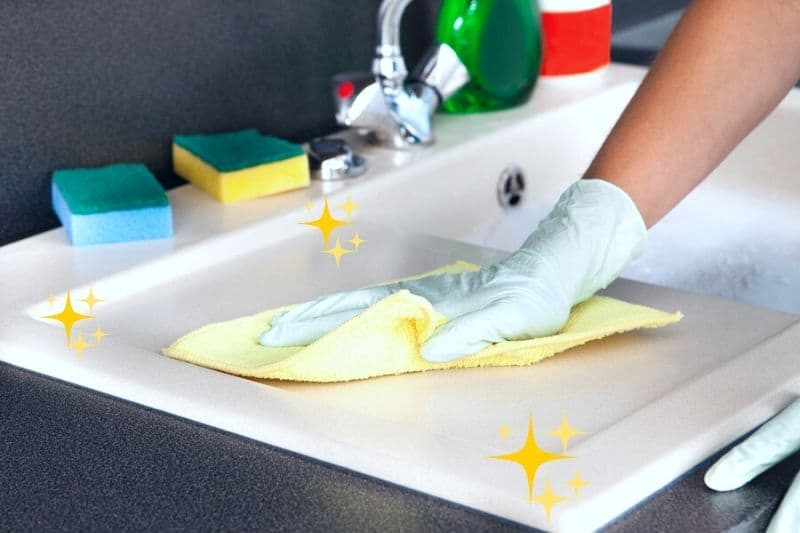A white composite sink is a lovely choice for many kitchens because it has a high-end appearance and a smaller price tag than real granite. That said, composite sinks are more expensive than stainless steel or porcelain.
Composite sinks come in many varieties including matte or shiny finishes as well as different shapes and colours, allowing them to complement any style of kitchen.
Another advantage of choosing a composite sink is its durability. Composed of a mix of quartz, plastic, and granite resin (hence, composite), bonded together by acrylic particles, these sinks last a long time.
They can be exposed to high temperatures with little risk and are highly resistant to cracks and chipping.
However, as resistant as these types of sinks are, they aren’t invincible and they do require some upkeep. The best approach is to clean them daily to avoid having to restore them. In this article, we explain how to clean a white composite sink and how to restore it if the time comes.
How to Clean a White Composite Sink
Daily cleaning is essential in maintaining a composite sink, especially white ones which are more susceptible to staining than black ones.
Be sure to rinse the sink out after every use to ensure that no liquids or food remain on the sink’s surface and become difficult to remove later.
It’s also important to dry off the sink after rinsing because hard water deposits can be damaging to a composite surface if left to dry.

We don’t always have time to clean our sinks right after using them and stains can build up on the surface. If you notice stains on your white composite sink, simply make up a mixture of dish soap and water, and wipe the sink down with a lint-free cloth or non-abrasive sponge.
For the really difficult stains that just won’t budge, try a mixture of vinegar and water and scrub the area with a soft bristle brush. It’s important to dilute the vinegar and not apply pure vinegar directly to the surface as this can erode the protective layer.
Alternatively, you can apply bicarbonate of soda directly to the stain and spray it with a vinegar/water solution and wipe it away with a sponge or brush.
How Do I Get My Sink White Again?
One of the disadvantages of opting for a white coloured sink is that it’s less forgiving in terms of stains. When dark foods or liquids are left on the sink, they can stain the white surface and can be difficult to remove, even with vinegar and bicarbonate of soda.

The sink will also be subjected to general wear and tear, and even with regular rinsing, dull marks will be more visible on a white surface. This is when you may want to try and restore the sink to a bright white.
To do this, you will need to use bleach. Mix a solution of one part bleach to 20 parts water or around 180 ml of bleach for a gallon of water. Let the solution sit in the sink overnight and then drain it. Rinse off the sink with just water and dry it.
Sealing Your White Composite Sink
It’s not necessary to apply a sealant to a composite sink regularly, unlike granite sinks which do need sealing more often. That said, after some years of wear and tear, you might have to seal your white composite sink.
While they are mostly resistant to scratches and heat damage, composite sinks can still sustain damage from hard water deposits, extremely hot pans, and scratches which can degrade the sink’s sealant.
You’ll know that it’s time to restore your sink when it begins to look dull and worn out. This means that the protective seal is degrading which could expose the surface to water damage.
There are two types of maintenance you might need to do in this case: sealing and sanding.
Cracks or scratches

You can buy dedicated composite restoring kits for dealing with abrasions. These include sandpaper to sand out the crack. Deeper cracks may need to be filled in and sanded down.
If you are going to take on this task yourself, check your manufacturer’s instructions and buy a dedicated composite sink restoring kit so that you’re sure that you don’t use any chemicals or tools that are unsafe for the sink.
Restoring the surface
If you have sanded out a scratch or the surface has begun to look worn down, you will need to apply a sealant to the surface of the sink to protect its composition.
Look for a special composite sink sealer as you need to be careful which chemicals come into contact with a composite sink.
Many household brands make composite sealants but be sure to also check the sink’s instruction manual for any specific requirements.
Once you have chosen your product, you will need to start with a pristine surface so that the sealant can coat the sink itself and not lock in any stains or mineral deposits.
You will also need to protect yourself as these chemicals can be toxic, so be sure to ventilate the room and put on protective gloves and goggles.
From there, follow the instructions on the packaging of your chosen cleaner as the cleaning methods and timing can vary depending on the composition of the cleaner itself.

In The Wash is your guide to the best laundry and cleaning products, tips and tricks. Our mission is to solve the UK’s cleaning and laundry dilemmas!






